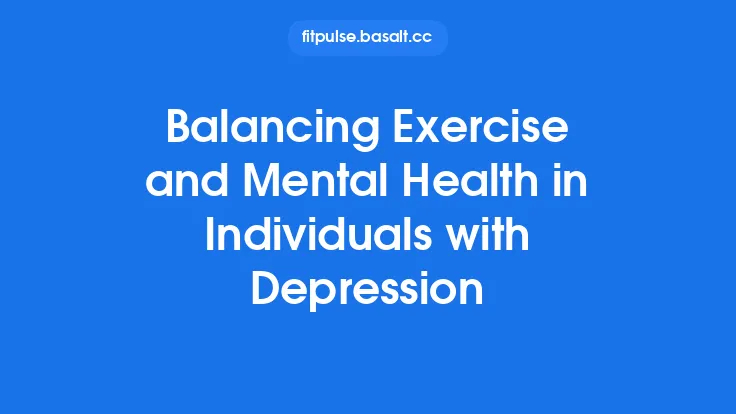Osteoporosis is a systemic skeletal disease characterized by reduced bone mass and micro‑architectural deterioration, which together increase bone fragility and susceptibility to fracture. While the condition is often associated with aging, it can affect men and women across a wide age range, especially those with risk factors such as long‑term glucocorticoid use, low calcium intake, sedentary lifestyles, or a family history of fractures. Exercise, when prescribed thoughtfully, is one of the most potent non‑pharmacologic tools for preserving or even modestly increasing bone mineral density (BMD), improving balance, and reducing fall risk. However, the same mechanical forces that stimulate bone remodeling can also precipitate fractures if the loading is excessive or improperly applied. The following guidelines synthesize current evidence and expert consensus to help clinicians, fitness professionals, and individuals with osteoporosis design and implement safe, effective exercise programs.
Understanding the Bone‑Loading Mechanism
Bone adapts to mechanical strain through a process known as mechanotransduction. When osteocytes sense deformation, they signal osteoblasts to lay down new bone matrix and osteoclasts to resorb old or damaged tissue. The magnitude, rate, and frequency of loading all influence the osteogenic response:
| Loading Parameter | Osteogenic Effect | Safe Range for Osteoporosis |
|---|---|---|
| Magnitude (force) | Higher forces stimulate more bone formation. | Moderate forces (≈ 70–80 % of one‑repetition maximum, 1‑RM) for resistance work; avoid maximal lifts or rapid high‑impact jumps. |
| Rate (speed of load) | Faster loading rates are more osteogenic. | Controlled, purposeful movements; avoid sudden jerks or “ballistic” actions. |
| Frequency (repetitions per session) | Repetitive loading yields cumulative benefit. | 8–12 repetitions per set, 2–3 sets per exercise; 2–3 sessions per week for resistance work. |
| Rest Intervals | Allows bone cells to recover and adapt. | 48‑72 h between sessions targeting the same muscle‑skeletal region. |
Understanding these principles helps shape exercise selection, intensity, and progression while minimizing fracture risk.
Initial Assessment and Medical Clearance
Before initiating any program, a comprehensive evaluation is essential:
- Medical History – Document fracture history (especially vertebral or hip), medication use (e.g., bisphosphonates, glucocorticoids), comorbidities (e.g., severe arthritis, cardiovascular disease), and previous exercise experience.
- Bone Density Testing – Dual‑energy X‑ray absorptiometry (DXA) results provide a baseline for tracking progress and tailoring load.
- Functional Screening – Use simple tests such as the Timed Up‑and‑Go (TUG), single‑leg stance, and a 5‑repetition sit‑to‑stand to gauge balance, strength, and mobility.
- Pain and Spinal Alignment – Identify areas of chronic pain, kyphosis, or spinal deformities that may limit certain movements.
- Physician Clearance – Particularly for individuals with recent fractures, severe osteoporosis (T‑score ≤ ‑2.5 with fragility fractures), or those on high‑risk medications.
A documented clearance ensures that the exercise prescription aligns with the individual’s health status and risk profile.
Core Principles of Safe Exercise for Osteoporosis
- Progressive Overload Within Safe Limits – Gradually increase resistance or volume while staying below the threshold that could cause micro‑damage.
- Emphasis on Weight‑Bearing and Resistance Activities – These modalities provide the mechanical stimulus needed for bone remodeling.
- Incorporation of Balance and Proprioceptive Training – Reduces fall risk, a primary cause of osteoporotic fractures.
- Avoidance of High‑Impact and End‑Range Spinal Flexion – Activities such as running, jumping, or forward bending beyond 45° can increase vertebral fracture risk.
- Consistency Over Intensity – Regular, moderate‑intensity sessions are more beneficial than sporadic high‑intensity bouts.
- Individualization – Tailor exercise selection, volume, and progression to the person’s functional capacity, preferences, and goals.
Exercise Modalities and Specific Recommendations
1. Weight‑Bearing Aerobic Activities
| Modality | Description | Intensity | Frequency | Duration |
|---|---|---|---|---|
| Brisk Walking | Low‑impact, forward progression on level surfaces. | 3–4 METs (moderate) | 3–5 days/week | 30–45 min |
| Elliptical Trainer | Simulates walking/running without impact. | 4–5 METs | 2–4 days/week | 20–30 min |
| Stair Climbing (Step‑Ups) | Controlled ascent on a low step (≤ 15 cm). | Moderate | 2–3 days/week | 10–15 min (intervals) |
Guideline: Maintain an upright posture, avoid excessive forward flexion, and use handrails for stability when needed.
2. Resistance (Strength) Training
Key Variables: 70–80 % of 1‑RM, 8–12 repetitions, 2–3 sets, 48‑72 h rest between sessions targeting the same muscle group.
| Exercise | Targeted Region | Technique Tips |
|---|---|---|
| Leg Press (Horizontal) | Femur, tibia | Feet shoulder‑width, avoid locking knees; limit range to 90° knee flexion. |
| Seated Row | Upper back, scapular stabilizers | Keep spine neutral; pull to chest, not neck. |
| Chest Press (Machine) | Humerus, clavicle | Use moderate weight; avoid excessive shoulder protraction. |
| Standing Calf Raise (Supported) | Tibia, fibula | Hold onto a stable surface; rise slowly. |
| Wall Squat (Isometric) | Quadriceps, hip extensors | Back against wall, knees at 90°, hold 10–15 s. |
| Resistance Band Hip Abduction | Gluteus medius, pelvis stability | Anchor band low, keep torso upright. |
Progression: Increase load by 5 % once the individual can comfortably complete 12 repetitions with proper form for two consecutive sessions.
3. Balance and Proprioception Training
| Exercise | Description | Duration |
|---|---|---|
| Single‑Leg Stance (Supported) | Stand on one foot, hold onto a chair if needed. | 30 s each leg, 2–3 sets |
| Tandem Walk | Heel‑to‑toe walking along a straight line. | 10–15 steps forward, 2–3 repetitions |
| Heel‑to‑Toe Rocking | Shift weight forward and backward while maintaining a neutral spine. | 1 min, 2 sets |
| Tai Chi (Modified) | Slow, controlled movements emphasizing weight shift. | 20–30 min, 2–3 times/week |
Balance work should be performed on stable surfaces initially; progression to unstable surfaces (e.g., foam pads) is permissible only after mastery of basic stability.
4. Flexibility (Stretching) – Emphasizing Safety
- Static Stretching for major muscle groups (hamstrings, quadriceps, calf, chest, upper back) performed after the main workout.
- Avoid deep forward bends, especially of the lumbar spine. Instead, use prone or supine stretches that keep the spine neutral.
- Hold each stretch for 15–30 seconds, repeat 2–3 times per muscle group.
Programming Structure: Sample Weekly Plan
| Day | Session Focus | Content |
|---|---|---|
| Monday | Resistance + Balance | 5‑minute warm‑up (walking), 2 sets of leg press, seated row, wall squat, calf raise; 2 balance drills; 5‑minute cool‑down stretch. |
| Tuesday | Aerobic | 30‑minute brisk walk or elliptical at moderate intensity. |
| Wednesday | Rest or Light Activity | Gentle yoga (neutral spine) or household chores. |
| Thursday | Resistance + Balance | Same as Monday, but substitute hip abduction band for leg press. |
| Friday | Aerobic + Flexibility | 20‑minute stair step‑ups (low step) + 10‑minute full‑body stretch. |
| Saturday | Balance + Proprioception | 15‑minute balance circuit (single‑leg stance, tandem walk, heel‑to‑toe rocking). |
| Sunday | Rest | Full recovery. |
Note: Adjust frequency and volume based on individual tolerance, fatigue levels, and any emerging pain or discomfort.
Monitoring Progress and Safety Checks
- Pain Surveillance – Any new or worsening pain, especially in the spine, hips, or wrists, warrants immediate cessation of the activity and medical review.
- Performance Metrics – Track repetitions, load, balance time, and walking distance to gauge improvements.
- Bone Health Re‑assessment – Repeat DXA every 1–2 years to evaluate BMD changes.
- Fall Log – Document any falls, near‑misses, or loss of balance episodes to refine balance training.
- Heart Rate & Perceived Exertion – Use the Borg Scale (12–14 for moderate intensity) to ensure cardiovascular safety without overexertion.
Common Pitfalls and Contraindicated Movements
| Pitfall | Why It’s Problematic | Alternative |
|---|---|---|
| High‑Impact Jumping | Generates rapid, high‑magnitude forces that can cause vertebral compression fractures. | Low‑impact step‑ups or marching in place. |
| Deep Forward Bending (e.g., sit‑ups, toe‑touches) | Places excessive flexion stress on the lumbar vertebrae. | Supine pelvic tilts, seated hamstring stretch with neutral spine. |
| Heavy Overhead Presses | Increases axial loading on the thoracic spine. | Seated chest press or lateral raise with light dumbbells. |
| Rapid Twisting Motions (e.g., golf swing, tennis serve) | Generates shear forces on the vertebrae. | Controlled rotational exercises with limited range, performed in a seated or supported position. |
| Unsupervised Use of Free Weights | Higher risk of loss of balance or improper technique. | Use of resistance machines or supervised sessions with a qualified trainer. |
Integrating Exercise into Daily Life
- Active Transportation: Walk or cycle for short trips instead of driving.
- Household Tasks: Perform chores (e.g., gardening, light lifting) with proper posture and avoid over‑reaching.
- Micro‑Sessions: Break longer workouts into 10‑minute bouts throughout the day if time is limited.
- Social Support: Join community groups focused on “bone‑healthy” activities (e.g., walking clubs) to improve adherence.
Role of Healthcare Professionals and Fitness Specialists
| Professional | Primary Contribution |
|---|---|
| Physician/Endocrinologist | Medical clearance, medication management, monitoring BMD trends. |
| Physical Therapist | Functional assessment, individualized exercise prescription, gait and balance training. |
| Certified Exercise Physiologist | Program design, progression monitoring, education on safe technique. |
| Registered Dietitian | Nutritional counseling (calcium, vitamin D) to complement exercise benefits. |
Collaboration among these experts ensures a holistic approach that addresses both the mechanical and metabolic aspects of osteoporosis management.
Key Takeaways
- Safety First: Prioritize neutral spinal alignment, moderate loading, and avoidance of high‑impact or excessive flexion movements.
- Balanced Program: Combine weight‑bearing aerobic work, resistance training, balance exercises, and gentle flexibility work.
- Progress Gradually: Use the 5 % rule for load increases and allow 48–72 h of recovery between sessions targeting the same skeletal region.
- Monitor Continuously: Track pain, performance, and functional changes; adjust the program promptly if red flags appear.
- Collaborate: Engage healthcare providers and qualified fitness professionals to tailor and supervise the program.
By adhering to these evidence‑based guidelines, individuals with osteoporosis can safely harness the bone‑strengthening power of exercise, improve functional independence, and reduce the risk of fractures—ultimately enhancing quality of life while respecting the fragility of their skeletal system.





